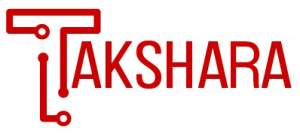Electrostatics is a field of study within the realm of physics that examines the consequences arising from the presence of electric charges that are either stationary or in a state of slow motion. Electrostatics is recognised as one of the primary subfields within the broader domain of electromagnetic, alongside magnetostatics.
Electrostatic phenomena arise as a result of the interactions between electric charges, wherein these charges exert forces against one another. Coulomb’s law, which states that the force between two point charges is proportional to the product of the charges and inversely proportional to the square of the distance between them, provides a description of these forces.
The field of electrostatics encompasses numerous practical applications in various real-world contexts. The utilisation of this component is prevalent in the design and functioning of numerous electrical apparatuses, including capacitors, transistors, and cathode ray tubes. Additionally, it finds application in various other domains, including air purification systems, photocopiers, and laser printers.
The following are instances of electrostatic phenomena:
Static cling occurs when two items are subjected to friction, resulting in the generation of an electric charge. This phenomenon occurs due to the ability of electrons to undergo transfer between objects. The phenomenon of static cling arises from the mutual attraction between charged items.
Lightning is a phenomenon characterised by a significant electrostatic discharge that takes place on a grand scale, manifesting either between clouds or between a cloud and the Earth’s surface. The accumulation of charges within the clouds persists until their magnitude surpasses the resistance offered by the surrounding air, leading to the subsequent discharge of a lightning bolt.
Cathode ray tubes (CRTs) were employed in previous generations of televisions and computer monitors. The operational mechanism involves the acceleration of electrons, which are subsequently directed towards a phosphor-coated screen. The emission of light from the phosphor, induced by the movement of electrons, results in the formation of the visual representation on the screen.
Photocopiers and laser printers employ the principles of electrostatics in order to generate visual representations on paper surfaces. The process of generating a charge pattern on a drum in a photocopier involves the utilisation of light. Subsequently, the drum magnetically collects toner particles, which are subsequently transmitted onto the paper. The charge pattern on the drum of a laser printer is generated by employing a laser.
The area of electrostatics holds significant importance and is a subject of great fascination within the realm of physics. The subject under consideration possesses several practical implications in various real-world contexts, and it plays a crucial role in comprehending the dynamics of matter at the atomic and molecular scale.
The II PUC Physics curriculum encompasses several significant subjects within the field of electrostatics.
The electrostatic potential energy refers to the energy associated with the position of a point charge within an electric field. It is quantified as the amount of work performed by the electric field in transferring the charge from an infinite distance to the specific location under consideration.
The concept of electric potential refers to the measure of potential energy per unit charge at a specific point.
Equipotential surfaces refer to surfaces within an electric field where the electric potential is constant at all points along the surface.
The relationship between the electric field and potential can be described by stating that the electric field is equal to the negative gradient of the electric potential.
The electric potential energy of a system of charges can be determined by calculating the total of the potential energies associated with each pair of charges within the system.
The determination of the potential energy of a dipole in the presence of an external electric field is contingent upon the relative alignment between the dipole and the field.
The study of electrostatics in relation to conductors involves the examination of materials that possess the ability to facilitate the unrestricted mobility of electrons. When a conductor becomes charged, the charge is evenly distributed across the outside surface of the conductor.
Electrostatic shielding refers to the practise of employing a conductor to impede the penetration of an electric field into a given area.
Dielectrics and polarisation: Dielectrics refer to substances that possess the ability to undergo polarisation when subjected to an electric field. Polarisation refers to the phenomenon through which the positive and negative charges within a substance get separated.
Electrical capacitance refers to the inherent property of a conductor to accumulate and retain electric charge.
Capacitors are electronic components utilised for the purpose of storing electric charge.
There exist three primary categories of capacitors, namely parallel plate capacitors, spherical capacitors, and cylindrical capacitors.
The parallel plate capacitor consists of two parallel plates that are positioned at a specific distance from each other.
A spherical capacitor is composed of two spheres that are concentric with one another.
A cylindrical capacitor comprises two coaxial cylinders.
The concept of energy stored in a capacitor refers to the potential energy that is accumulated within the electric field between the capacitor’s charged plates. The amount of energy stored in a capacitor is directly proportional to both the square of the voltage applied across the capacitor and the capacitance of the capacitor.
Capacitors find various applications in a multitude of fields. Capacitors find extensive use across several domains, encompassing functions such as filtration, tuning, and energy accumulation.
The II PUC Physics curriculum encompasses a range of significant subjects within the field of electrostatics. To acquire a more comprehensive comprehension of these subjects, it is recommended to consult your textbook or alternative scholarly sources.




